Micro-Minerals
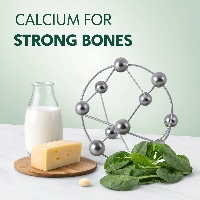
Calcium (Ca)
Description: Calcium, with the chemical symbol Ca, is an essential alkaline earth metal vital for bone and teeth formation and muscle function.
Prevalence: ~44.1% below EAR; <15% of teenage girls, <10% of women over 50, and <22% of teenage boys/men over 50 meet needs.
At-Risk Groups: Teenage girls, women over 50, men over 50, non-dairy consumers.
Health Impacts: Osteoporosis, fractures, muscle dysfunction, nerve issues.
Cause: Low dairy/fortified food intake, vitamin D deficiency impairing absorption.
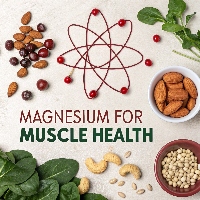
Magnesium (Mg)
Description: Magnesium, with the chemical symbol Mg, is an essential alkaline earth metal crucial for enzyme function and muscle relaxation.
Prevalence: ~52.2% below EAR; up to 68-75% in some estimates, especially among the elderly.
At-Risk Groups: Elderly, those with type 2 diabetes, gastrointestinal disorders.
Health Impacts: Muscle cramps, fatigue, increased risk of diabetes, heart disease, osteoporosis.
Cause: Low intake of nuts, seeds, leafy greens; soil depletion reducing magnesium in produce.
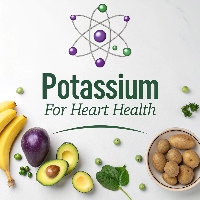
Potassium (K)
Description: Potassium, with the chemical symbol K, is an essential alkali metal key for fluid balance and nerve transmission.
Prevalence: 100% below the AI of 4,700 mg/day; <3% meet the recommendation.
At-Risk Groups: General population.
Health Impacts: Hypertension, cardiovascular disease, kidney dysfunction.
Cause: Low fruit/vegetable intake, high sodium consumption.
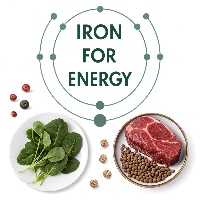
Iron (Fe)
Description: Iron, with the chemical symbol Fe, is a transition metal essential for oxygen transport in hemoglobin and energy metabolism.
Prevalence: <10% overall; 11% of Mexican-American children (1-5 years), 13% of non-Hispanic Black and Mexican-American women (12-49 years).
At-Risk Groups: Young children, women of childbearing age, pregnant women.
Health Impacts: Anemia, fatigue, developmental delays, shortness of breath.
Cause: Low intake of heme iron (meat), menstrual blood loss, increased needs during pregnancy.
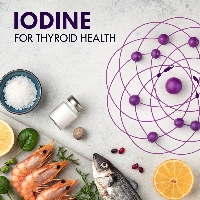
Iodine (I)
Description: Iodine, with the chemical symbol I, is a halogen element critical for thyroid hormone production and metabolic regulation.
Prevalence: ~33% of pregnant women are marginally deficient.
At-Risk Groups: Pregnant women, vegans, those avoiding iodized salt.
Health Impacts: Thyroid dysfunction (goiter), developmental issues in children, weight gain.
Cause: Reduced use of iodized salt, low intake of seafood/dairy.

Zinc (Zn)
Description: Zinc, with the chemical symbol Zn, is a transition metal vital for immune function and enzyme activity.
Prevalence: ~15% below EAR; higher in the elderly and those with malabsorption.
At-Risk Groups: Elderly, vegans, individuals with celiac disease.
Health Impacts: Impaired immunity, delayed wound healing, growth issues in children.
Cause: Low intake of meat, shellfish; phytates in plant foods reducing absorption.
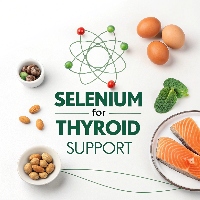
Selenium (Se)
Description: Selenium, with the chemical symbol Se, is a non-metal element important for antioxidant defense and thyroid health.
Prevalence: Not widely reported; higher risk in areas with low soil selenium (e.g., Pacific Northwest).
At-Risk Groups: Those in low-selenium regions, vegans.
Health Impacts: Thyroid dysfunction, weakened immunity, cardiovascular issues.
Cause: Low intake of selenium-rich foods (e.g., Brazil nuts, seafood), soil depletion.
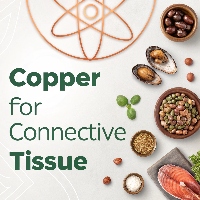
Copper (Cu)
Description: Copper, with the chemical symbol Cu, is a transition metal essential for connective tissue formation and iron metabolism.
Prevalence: Rare, but ~5% of adults may have marginal deficiency.
At-Risk Groups: Those with malabsorption (e.g., celiac disease), excessive zinc supplementation.
Health Impacts: Anemia, neurological issues, weakened connective tissue.
Cause: Low intake of organ meats, shellfish, nuts; zinc-copper imbalance.
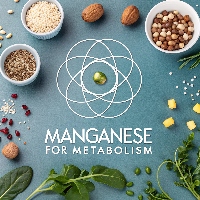
Manganese (Mn)
Description: Manganese, with the chemical symbol Mn, is a transition metal crucial for bone development and metabolism.
Prevalence: Rare, but some estimates suggest 10-20% may have suboptimal intake.
At-Risk Groups: Those with diets low in whole grains, nuts, leafy greens.
Health Impacts: Bone issues, impaired glucose metabolism, neurological symptoms (severe cases).
Cause: Limited intake of manganese-rich foods, soil depletion.
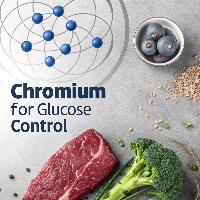
Chromium (Cr)
Description: Chromium, with the chemical symbol Cr, is a transition metal key for glucose metabolism and insulin function.
Prevalence: Data limited; possibly 20-30% have suboptimal intake.
At-Risk Groups: Elderly, those with high sugar diets.
Health Impacts: Impaired glucose tolerance, increased diabetes risk.
Cause: Low intake of whole grains, meats; refined diets.
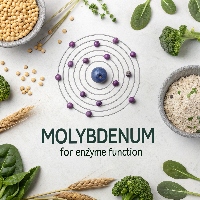
Molybdenum (Mo)
Description: Molybdenum, with the chemical symbol Mo, is a transition metal essential for sulfur metabolism and enzyme activity.
Prevalence: Very rare; <1% affected.
At-Risk Groups: Those with genetic disorders affecting molybdenum metabolism.
Health Impacts: Impaired sulfur metabolism, neurological issues (severe cases).
Cause: Extremely low intake of legumes, grains; genetic factors.
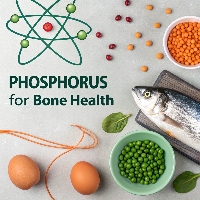
Phosphorus (P)
Description: Phosphorus, with the chemical symbol P, is a non-metal element vital for bone structure and energy production.
Prevalence: Rare; <5% below EAR, mostly in malnourished individuals.
At-Risk Groups: Those with malnutrition, kidney disease.
Health Impacts: Bone weakness, muscle dysfunction, respiratory issues.
Cause: Low overall food intake, impaired absorption.
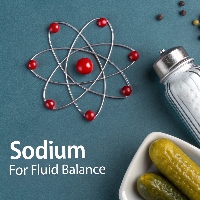
Sodium (Na)
Description: Sodium, with the chemical symbol Na, is an alkali metal crucial for fluid balance and nerve signaling.
Prevalence: Deficiency is rare; however, some athletes or those on very low-sodium diets may be at risk.
At-Risk Groups: Endurance athletes, those on extreme low-sodium diets.
Health Impacts: Hyponatremia (low blood sodium), causing confusion, seizures, muscle cramps.
Cause: Excessive sweating without sodium replacement, overly restrictive diets.
AdSense Ad Placeholder (Responsive Ad Unit)
Your Comprehensive Guide to Microminerals
At NutrientShield, we’re committed to helping you achieve optimal health through essential nutrients. Microminerals, or trace minerals, are required in minute amounts but play critical roles in immunity, thyroid function, bone health, and energy metabolism.1 Unlike macrominerals (calcium, magnesium, potassium), microminerals like iron, iodine, zinc, and others are needed in quantities less than 100 mg/day, yet their deficiencies can lead to serious health issues.2 This science-backed guide explores all essential microminerals, their roles, deficiency risks, dietary sources, meal plans, case studies, and supplementation options for vitality.3
What Are Microminerals?
Microminerals (iron, iodine, zinc, selenium, copper, manganese, chromium, molybdenum, fluoride, cobalt, and potentially silicon, nickel, vanadium) are essential for enzyme function, hormone production, and cellular health.4 Ultra-trace minerals (e.g., molybdenum, cobalt) are needed in even smaller amounts (<1 mcg/day).5 Deficiencies are more common in infants, pregnant women, and those with malabsorption issues.6 The table below summarizes Recommended Dietary Allowances (RDAs) or Adequate Intakes (AIs) for adults:7
| Mineral | RDA/AI (Men) | RDA/AI (Women) | UL | Key Sources |
|---|---|---|---|---|
| Iron | 8 mg/day | 18 mg/day (19–50) | 45 mg/day | Meat, spinach, lentils |
| Iodine | 150 mcg/day | 150 mcg/day | 1100 mcg/day | Iodized salt, seafood |
| Zinc | 11 mg/day | 8 mg/day | 40 mg/day | Shellfish, beef, pumpkin seeds |
| Selenium | 55 mcg/day | 55 mcg/day | 400 mcg/day | Brazil nuts, fish |
| Copper | 900 mcg/day | 900 mcg/day | 10 mg/day | Liver, shellfish, nuts |
| Manganese | 2.3 mg/day (AI) | 1.8 mg/day (AI) | 11 mg/day | Grains, nuts, tea |
| Chromium | 35 mcg/day (AI) | 25 mcg/day (AI) | Not established | Broccoli, meats |
| Molybdenum | 45 mcg/day | 45 mcg/day | 2 mg/day | Legumes, grains |
| Fluoride | 4 mg/day (AI) | 3 mg/day (AI) | 10 mg/day | Water, tea, fish |
| Cobalt | No RDA | No RDA | Not established | Meat, dairy (via B12) |
Microminerals: Detailed Insights
Iron
Iron is vital for hemoglobin synthesis and oxygen transport.8 Deficiency affects >25% globally, with 11% of Mexican-American children (1–5 years) and 13% of non-Hispanic Black/Mexican-American women (12–49) at risk, causing anemia and developmental delays.9 A 2024 study links deficiency to cognitive decline in children.10 RDA: 8 mg/day (men), 18 mg/day (women 19–50); UL: 45 mg/day (gastrointestinal distress). Sources: liver (3 oz = 5 mg), spinach (1 cup = 0.8 mg). Vegetarians need 1.8x RDA.11 Try Pure Encapsulations Iron-C.Affiliate Disclosure: We may earn a commission at no extra cost to you.
Iodine
Iodine fuels thyroid hormone production.12 ~33% of pregnant women and ~1.8 billion globally are deficient, risking goiter and fetal developmental issues.13 A 2025 study emphasizes fetal brain development.14 RDA: 150 mcg/day (adults), 220–290 mcg/day (pregnancy); UL: 1100 mcg/day (thyroid dysfunction). Sources: seaweed (1 g = 200–8000 mcg), iodized salt (1 tsp = 190 mcg). Use Thorne’s Iodine & Tyrosine.Affiliate Disclosure: We may earn a commission at no extra cost to you.
Zinc
Zinc supports immunity and DNA synthesis.15 ~15% below EAR, with elderly and vegans at risk, leading to infections and poor growth.16 A 2024 study links deficiency to viral susceptibility.17 RDA: 11 mg/day (men), 8 mg/day (women); UL: 40 mg/day (copper imbalance). Sources: oysters (1 = 74 mg, 670% RDA), beef (3 oz = 5.5 mg). Boost with Pure Encapsulations Zinc 30.Affiliate Disclosure: We may earn a commission at no extra cost to you.
Selenium
Selenium acts as an antioxidant.18 Deficiency in low-selenium soil areas increases cancer risk.19 A 2025 study suggests reduced oxidative stress in aging.20 RDA: 55 mcg/day; UL: 400 mcg/day (selenosis). Sources: Brazil nuts (1 = 96 mcg, 174% RDA), tuna (3 oz = 92 mcg). Try Life Extension Multi-Mineral.Affiliate Disclosure: We may earn a commission at no extra cost to you.
Copper
Copper aids iron metabolism and connective tissue formation.21 ~5% have marginal deficiency, risking anemia.22 A 2024 study links deficiency to neuropathy.23 RDA: 900 mcg/day; UL: 10 mg/day (liver damage). Sources: liver (1 oz = 4 mg, 444% RDA), shellfish.24 Consider Pure Encapsulations Trace Minerals.Affiliate Disclosure: We may earn a commission at no extra cost to you.
Manganese
Manganese supports enzyme function and bone health.25 10–20% have suboptimal intake.26 A 2025 study explores bone health benefits.27 AI: 2.3 mg/day (men), 1.8 mg/day (women); UL: 11 mg/day (neurological issues). Sources: grains (1 cup = 2.1 mg), tea.28
Chromium
Chromium may enhance insulin action.29 20–30% have suboptimal intake, but a 2024 study questions diabetes benefits.30 AI: 35 mcg/day (men), 25 mcg/day (women); no UL. Sources: broccoli (1 cup = 22 mcg), meats.31
Molybdenum
Molybdenum supports sulfur metabolism.32 Deficiency (<1%) is rare.33 A 2025 review confirms rarity.34 RDA: 45 mcg/day; UL: 2 mg/day (gout risk). Sources: legumes (1 cup = 100–200 mcg).35
Fluoride
Fluoride strengthens teeth and bones.36 Deficiency is rare but linked to cavities.37 A 2024 study confirms dental benefits.38 AI: 4 mg/day (men), 3 mg/day (women); UL: 10 mg/day (fluorosis). Sources: water (1 L = 0.7–1.2 mg), tea.39
Cobalt
Cobalt, part of vitamin B12, supports red blood cell production.40 Deficiency occurs with B12 deficiency.41 A 2024 study notes erythropoiesis role.42 No RDA; intake via B12 (2.4 mcg/day). Sources: meat (1 oz beef = 0.3 mcg cobalt).43
Ultra-Trace Minerals (Silicon, Nickel, Vanadium)
Silicon may support bone health; nickel and vanadium aid enzyme function, but essentiality is unclear.44 A 2025 review questions necessity.45 No RDAs; typical intakes: silicon (10–30 mg/day, grains), nickel (0.5 mg/day, nuts), vanadium (0.01 mg/day, shellfish).46
Macrominerals: A Brief Overview
Macrominerals (calcium, magnesium, potassium, phosphorus, sodium) are needed in larger amounts.47 Calcium (~44.1% below EAR) supports bones, with deficiency causing osteoporosis.48 Magnesium (~52.2% below EAR) aids muscle function, with low intake linked to diabetes risk.49 Potassium (100% below AI: 4700 mg/day) prevents hypertension.50 Phosphorus (<5% deficient) supports bones; sodium deficiency (rare) causes hyponatremia in athletes.51 Sources: dairy, greens, bananas, meats. Learn more in our Macro-Nutrients Guide.
Mineral-Specific Meal Plans
Boost your micromineral intake with these daily meal plans, designed per the Dietary Guidelines for Americans (2020–2025) to address common deficiencies (e.g., iron, iodine, zinc).52 Personalize further with nutrigenomics tools for tailored nutrition.53
Iron Meal Plan (Energy & Blood Health)
Goal: Achieve 18 mg/day (women 19–50) or 8 mg/day (men), ideal for vegetarians or pregnant women.54 
- Breakfast: Fortified cereal (1 cup, 18 mg iron), orange juice (70 mg Vitamin C to boost absorption).
- Lunch: Beef liver (3 oz, 5 mg iron), spinach salad (1 cup, 0.8 mg iron, 145 mcg Vitamin K).
- Dinner: Lentils (1 cup, 6.6 mg iron), quinoa (1 cup, 2.8 mg iron, 0.2 mg manganese).
- Total: ~33.2 mg iron (184% RDA women, 415% RDA men), plus Vitamin C, K, manganese.
Iodine Meal Plan (Thyroid Support)
Goal: Achieve 150 mcg/day (adults), 220–290 mcg/day (pregnancy), ideal for vegans.55 
- Breakfast: Greek yogurt (1 cup, 90 mcg iodine), berries (70 mg Vitamin C).
- Lunch: Seaweed salad (1 g, 200 mcg iodine), whole-grain bread (0.2 mg B1).
- Dinner: Baked cod (3 oz, 99 mcg iodine), roasted potatoes (470 mg potassium), broccoli (90 mg Vitamin C).
- Total: ~389 mcg iodine (259% RDA, 134–177% pregnancy RDA), plus Vitamin C, B1, potassium.
Zinc Meal Plan (Immune Health)
Goal: Achieve 11 mg/day (men) or 8 mg/day (women), ideal for elderly or vegans.56 
- Breakfast: Oatmeal (1 cup, 1.1 mg zinc) with pumpkin seeds (1 oz, 2.2 mg zinc).
- Lunch: Oysters (1, 74 mg zinc), spinach salad (0.8 mg iron, 145 mcg Vitamin K).
- Dinner: Beef (3 oz, 5.5 mg zinc), brown rice (1 cup, 1.2 mg zinc, 0.4 mg B6).
- Total: ~83.8 mg zinc (762% RDA men, 1048% RDA women), plus iron, Vitamin K, B6.
Case Studies: Real-World Mineral Deficiency Impacts
These case studies highlight the consequences of micromineral deficiencies and the benefits of targeted interventions, drawn from recent clinical research.57
Case Study 1: Iron Deficiency Anemia in a Pregnant Woman
A 28-year-old pregnant woman presented with fatigue and shortness of breath, with hemoglobin at 9 g/dL (anemic, normal: ≥11 g/dL). Low meat intake and increased pregnancy needs contributed. After 12 weeks of 65 mg/day iron supplementation, hemoglobin rose to 12 g/dL, per a 2024 *Am J Clin Nutr* study.58 Pregnant women should prioritize iron-rich foods or supplements like Pure Encapsulations Iron-C.Affiliate Disclosure: We may earn a commission at no extra cost to you.
Case Study 2: Iodine Deficiency in a Vegan
A 40-year-old vegan reported weight gain and fatigue, with urinary iodine at 50 mcg/L (deficient, normal: ≥100 mcg/L). Avoiding iodized salt and seafood contributed. After 8 weeks of 150 mcg/day iodine supplementation, thyroid function normalized, per a 2025 *Thyroid* study.59 Vegans should use iodized salt or supplements like Thorne’s Iodine & Tyrosine.Affiliate Disclosure: We may earn a commission at no extra cost to you.
Tips for Optimal Mineral Intake
- Diverse Diet: Include meat, seafood, nuts, grains, and vegetables to cover micromineral needs.60
- Monitor Interactions: High zinc reduces copper absorption; vitamin C boosts iron uptake.61
- Supplements: Use targeted supplements like Pure Encapsulations Trace Minerals for deficiencies.Affiliate Disclosure: We may earn a commission at no extra cost to you.
- Consult Experts: Work with a dietitian for personalized needs, especially during pregnancy or chronic conditions.62
- Avoid Excess: Over-supplementation risks toxicity (e.g., selenosis, fluorosis).63
Explore our Macro-Nutrients Guide, Micro-Vitamins Guide, or Mitochondrial Health Guide for more on optimizing your diet.
Disclaimer: This information is for educational purposes only and not a substitute for medical advice. Consult a healthcare professional before starting supplements.
